 W
WThis glossary of basketball terms is a list of definitions of terms used in the game of basketball. Like any other major sport, basketball features its own extensive vocabulary of unique words and phrases used by players, coaches, sports journalists, commentators, and fans.
 W
WThe 1–3–1 defense and offense is a popular strategy used in basketball.
 W
WThe 2–3 zone defense is a defensive strategy used in basketball as an alternative to man-to-man defense. It is referred to as the 2–3 because of its formation on the court, which consists of two players at the front of the defense and three players behind.
 W
WThe "50–40–90 club" is an informal statistic used to rate players as excellent shooters in the National Basketball Association (NBA) and Women's National Basketball Association (WNBA). It requires a player to achieve the criteria of 50% field goal percentage, 40% three-point field goal percentage and 90% free throw percentage over the course of a regular season. In NBA and WNBA history, only nine players have recorded a 50–40–90 season. The most recent player was Sydney Wiese in 2020.
 W
WAn alley-oop in basketball is an offensive play in which one player throws the ball near the basket to a teammate who jumps, catches the ball in mid air and slam dunks it before touching the ground.
 W
WIn basketball, an assist is attributed to a player who passes the ball to a teammate in a way that leads to a score by field goal, meaning that they were "assisting" in the basket. There is some judgment involved in deciding whether a passer should be credited with an assist. An assist can be scored for the passer even if the player who receives the pass makes a basket after dribbling the ball. However, the original definition of an assist did not include such situations, so the comparison of assist statistics across eras is a complex matter.
 W
WBall boys and ball girls are individuals, usually youths, who retrieve and supply balls for players or officials in sports such as association football, American football, bandy, cricket, tennis, baseball and basketball. Though non-essential, their activities help to speed up play by reducing the amount of inactive time.
 W
WA bench-clearing brawl is a form of ritualistic fighting that occurs in sports, most notably baseball and ice hockey, in which every player on both teams leaves their dugouts, bullpens, or benches, and charges the playing area in order to fight one another or try to break up a fight. Penalties for leaving the bench can range from nothing to severe.
 W
WIn basketball, a block or blocked shot occurs when a defensive player legally deflects a field goal attempt from an offensive player to prevent a score. The defender is not allowed to make contact with the offensive player's hand or a foul is called. In order to be legal, the block must occur while the shot is traveling upward or at its apex. A deflected field goal that is made does not count as a blocked shot and simply counts as a successful field goal attempt for shooter plus the points awarded to the shooting team. For the shooter, a blocked shot is counted as a missed field goal attempt. Also, on a shooting foul, a blocked shot cannot be awarded or counted, even if the player who deflected the field goal attempt is different from the player who committed the foul. If the ball is heading downward when the defender hits it, it is ruled as goaltending and counts as a made basket. Goaltending is also called if the block is made after the ball bounces on the backboard.
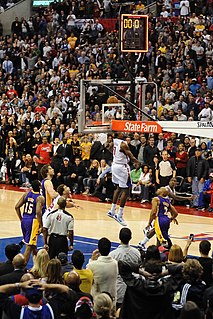 W
WIn basketball and other such timed sports, a buzzer beater is a shot that is taken before the game clock of a quarter, a half, or an overtime period expires but does not go in the basket until after the clock expires and the buzzer sounds. The concept normally applies to baskets that beat an end-of-quarter/half/overtime buzzer but is sometimes applied to shots that beat the shot clock buzzer.
 W
WThe center (C), also known as the five, or the big man, is one of the five positions in a basketball game. The center is normally the tallest player on the team, and often has a great deal of strength and body mass as well. In the NBA, the center is usually 6 feet 10 inches (2.08 m) or taller. They traditionally have played close to the basket in the low post.
 W
WA combo guard is a basketball player who combines the attributes of a point guard (1) and shooting guard (2), but does not necessarily fit the standard description of either position. Such guards are usually within the 6' 3" and 6' 5" height range. Most combo guards tend to be between point and shooting guards in terms of height, although some possess the height of a point or shooting guard specifically which affects how each plays.
 W
WIn basketball, the basketball court is the playing surface, consisting of a rectangular floor, with baskets at each end. In professional or organized basketball, especially when played indoors, it is usually made out of a wood, often maple, and highly polished and completed with a 10 foot rim. Outdoor surfaces are generally made from standard paving materials such as concrete or asphalt.
 W
WCrooked Zebra is a 2004 novel by former University of Texas college basketball coach Bob Weltlich.
 W
WA crossover dribble is a basketball maneuver in which a player dribbling the ball switches the ball rapidly from one hand to the other, to make a change in direction. In a typical example the player heads upcourt, dribbling the ball in (say) the left hand, then makes a wide step left with a good head fake. If the defender is deceived, the player can then switch to dribbling with the right hand and surpass the defender. The crossover can allow the player an open short jumper or a clear path to the basket.
 W
WA "cup of coffee" is a North American sports idiom for a short time spent by a minor league player at the major league level. The idea behind the term is that the player was only in the big leagues long enough to have a cup of coffee before being returned to the minors. The term originated in baseball and is extensively used in ice hockey, both of whose professional leagues utilize extensive farm systems; it is rarely used in basketball or American football since neither the NBA nor NFL have implemented a true farm system.
 W
WCutting down the nets is a celebratory tradition in basketball wherein a coach or player removes the net from one of the backboards after winning a game. In college basketball in the United States, it is usually done after winning a conference tournament, regional title, or national championship game.
 W
WIn basketball, a double-double is a single-game performance in which a player accumulates ten or more in two of the following five statistical categories: points, rebounds, assists, steals, and blocked shots. The first "double" in the term refers to the two (double) categories and the second "double" refers to accumulating ten or more in that category. Similarly, a player records a triple-double, quadruple-double, and quintuple-double when accumulating ten or more in three, four, or all five of the statistical categories, respectively. While double-doubles and triple-doubles occur regularly each NBA season, only four quadruple-doubles have ever officially been recorded in the NBA, and a quintuple-double has never officially been recorded at the professional, collegiate, or even high school boys' level. A similar coined term is the five-by-five, is the accumulation of at least five in all five statistical categories.
 W
WIn basketball, a double team is a defensive alignment in which two defensive players are assigned to guard a single offensive player.
 W
WA fadeaway or fall-away in basketball is a jump shot taken while jumping backwards, away from the basket. The goal is to create space between the shooter and the defender, making the shot much harder to block.
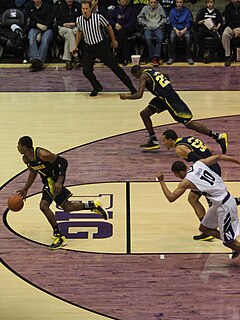 W
WFast break is an offensive strategy in basketball and handball. In a fast break, a team attempts to move the ball up court and into scoring position as quickly as possible, so that the defense is outnumbered and does not have time to set up. The various styles of the fast break–derivative of the original created by Frank Keaney–are seen as the best method of providing action and quick scores. A fast break may result from cherry picking.
 W
WIn basketball, a field goal is a basket scored on any shot or tap other than a free throw, worth two or three points depending on the distance of the attempt from the basket. Uncommonly, a field goal can be worth other values such as one point in FIBA 3x3 basketball competitions or four points in the BIG3 basketball league. "Field goal" is the official terminology used by the National Basketball Association (NBA) in their rule book, in their box scores and statistics, and in referees' rulings. The same term is also the official wording used by the National Collegiate Athletic Association (NCAA) and high school basketball.
 W
WThe finger roll is a specialized type of basketball layup shot where the ball is rolled off the tips of the player's fingers. The advantage of the finger roll is that the ball can travel high in the air over a defender that might otherwise block a regular jump shot or dunk, while the spin applied by the rolling over the fingers will carry the ball to the basket off the backboard. The shot was pioneered by center Wilt Chamberlain in the 1960s.
 W
WIn basketball, free throws or foul shots are unopposed attempts to score points by shooting from behind the free throw line, a line situated at the end of the restricted area. Free throws are generally awarded after a foul on the shooter by the opposing team, analogous to penalty shots in other team sports. Free throws are also awarded in other situations, including technical fouls, and when the fouling team has entered the bonus/penalty situation. Also depending on the situation, a player may be awarded between one and three free throws. Each successful free throw is worth one point.
 W
WA game seven is the final game of a best of seven series. This game can occur in the postseasons for Major League Baseball (MLB), the National Basketball Association (NBA), and the National Hockey League (NHL).
 W
WIn sport, a goal may refer to either an instance of scoring, or to the physical structure or area where an attacking team must send the ball or puck in order to score points. The structure of a goal varies from sport to sport, and one is placed at or near each end of the playing field for each team to defend. For many sports, each goal structure usually consists of two vertical posts, called goal posts, supporting a horizontal crossbar. A goal line marked on the playing surface between the goal posts demarcates the goal area. Thus, the objective is to send the ball or puck between the goal posts, under or over the crossbar, and across the goal line. Other sports may have other types of structures or areas where the ball or puck must pass through, such as the basketball hoop.
 W
WHack-a-Shaq is a basketball defensive strategy used in the National Basketball Association (NBA), where Dallas Mavericks coach Don Nelson adapted the strategy of committing intentional fouls to the purpose of lowering opponents' scoring. He directed players to commit personal fouls throughout the game against selected opponents who shot free throws poorly.
 W
WIn basketball, a hook shot is a play in which the offensive player, usually turned perpendicular to the basket, gently throws the ball with a sweeping motion of the arm farther from the basket in an upward arc with a follow-through which ends over his head. Unlike the jump shot, it is shot with only one hand; the other arm is often used to create space between the shooter and the defensive player. The shot is quite difficult to block, but few players have mastered the shot more than a few feet from the basket.
 W
WA jump ball is a method used to begin or resume play in basketball. It is similar to a face-off in ice hockey and field lacrosse and a ball-up in Australian rules football. Two opposing players attempt to gain control of the ball after an official tosses it into the air between them.
 W
WIn basketball, a player may attempt to score a basket by leaping straight into the air, the elbow of the shooting hand cocked, ball in hand above the head, and lancing the ball in a high arc towards the basket for a jump shot. Although early critics thought the leap might lead to indecision in the air, the jump shot replaced the earlier, less quickly released set shot, and eventually transformed the game because it is the easiest shot to make from a distance and more difficult for a defender to block. Variations on the simple jump shot include the "turnaround jumper" ; the "fadeaway" ; and the "leaning jumper". With the "hook shot," a player is turned sideways with the shooting arm away from the basket outstretched so that with a sweep he can launch the ball over his head. Since a defender must leap to block a jumper, the shooter may use a pump fake to get the defender in the air at the wrong time and so have a clear shot. If the shooter leaps into the defender, a foul is called on the defensive player, whereat the shooter is awarded two or three free throws according to the value of a missed attempt, or a single free throw if he scores.
 W
WThe key, officially referred to as the free throw lane by the National Basketball Association (NBA), the National Collegiate Athletic Association (NCAA), and the National Association of Intercollegiate Athletics (NAIA), the restricted area by the international governing body FIBA, and colloquially as the lane or the paint, is a marked area on a basketball court surrounding the basket. It is bounded by the endline, the free-throw line and two side lines, and usually painted in a distinctive color. It is a crucial area on the court where much of the game's action takes place.
 W
WA layup in basketball is a two-point shot attempt made by leaping from below, laying the ball up near the basket, and using one hand to bounce it off the backboard and into the basket. The motion and one-handed reach distinguish it from a jump shot. The layup is considered the most basic shot in basketball. When doing a layup, the player lifts the outside foot, or the foot away from the basket.
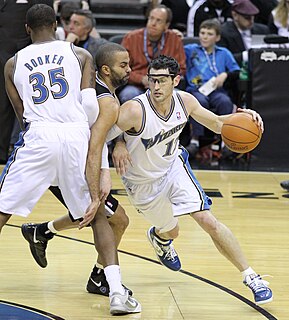 W
WThe pick and roll in basketball is an offensive play in which a player sets a screen (pick) for a teammate handling the ball and then moves toward the basket (rolls) to receive a pass. In the NBA, the play came into vogue in the 1990s and has developed into the league's most common offensive action. There are however many ways in which the defense can also counter the offensive screen.
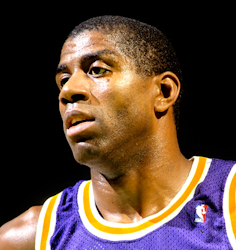 W
WThe point guard (PG), also called the one or the point is one of the five positions in a regulation basketball game. A point guard has perhaps the most specialized role of any position. Point guards are expected to run the team's offense by controlling the ball and making sure that it gets to the right player at the right time. Above all, the point guard must understand and accept their coach's game plan; in this way, the position can be compared to a quarterback in American football, a catcher in baseball, or a playmaker in soccer. They must also be able to adapt to what the defense is allowing and must control the pace of the game.
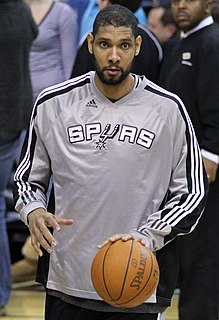 W
WThe power forward (PF), also known as the four, is a position in basketball. Power forwards play a role similar to centers. They typically play 'offensively' with their backs towards the basket and position themselves defensively under the basket in a zone defense or against the opposing power forward in man-to-man defense. The power forward position entails a variety of responsibilities, one of which is rebounding. Many power forwards are noted for their mid-range jump-shot, and several players have become very accurate from 12 to 18 feet. Earlier, these skills were more typically exhibited in the European style of play. Some power forwards, known as stretch fours, have since extended their shooting range to three-point field goals.
 W
WIn basketball, a rebound, sometimes colloquially referred to as a board, is a statistic awarded to a player who retrieves the ball after a missed field goal or free throw.
 W
WA screen is a blocking move by an offensive player in which they stand beside or behind a defender in order to free a teammate to either shoot a pass or drive in to score. In basketball and field lacrosse, it is also known as a pick. Screens can be on-ball, or off-ball. The two offensive players involved in setting the screen are known as the screener and the cutter.
 W
WIn the National Basketball Association, shootaround is an informal practice session.
 W
WThe shooting guard (SG), also known as the two, two guard or off guard, is one of the five traditional positions in a regulated basketball game. A shooting guard's main objective is to score points for their team and steal the ball on defence. Some teams ask their shooting guards to bring up the ball as well; these players are known colloquially as combo guards. A player who can switch between playing shooting guard and small forward is known as a swingman. In the NBA, shooting guards usually range from 6' 3" to 6' 7” while in the WNBA, shooting guards tend to be between 5' 10" to 6' 1".
 W
WA shot clock is a countdown timer used in basketball that provides a set amount of time that a team may possess the ball before attempting to score a field goal. It is distinct from the game clock, which displays the time remaining in the period of play. It may be colloquially known as the 24-second clock, particularly in the NBA and other leagues where that is the duration of the shot clock. If the shot clock reaches zero before the team attempts a field goal, the team has committed a shot clock violation, which is penalized with a loss of possession.
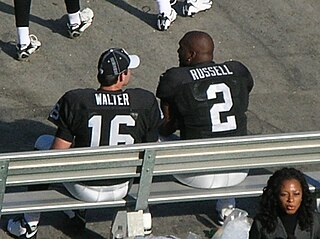 W
WThe "sidelines" are the white or colored lines which mark the outer boundaries of a sports field, running parallel to each other and perpendicular to the goal lines. The sidelines are also where the coaching staff and players out of play operate during a game. The area outside the sidelines is said to be out of bounds. The term is predominantly in use in American football, Canadian football, field lacrosse and basketball.
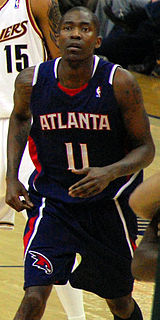 W
WThe sixth man in basketball is a player who is not a starter but comes off the bench much more often than other reserves, often being the first player to be substituted in. The sixth man often plays minutes equal to or exceeding some of the starters and posts similar statistics. He is often a player who can play multiple positions, hence his utility in substituting often. For example, Kevin McHale, a famous sixth man who played for the Boston Celtics in the 1980s, variably played center and power forward. The presence of a good sixth man is often a sign of team excellence. It usually means that a team has excellent depth, as the sixth man is usually more than talented enough to start for most teams.
 W
WA slam dunk, also simply dunk, is a type of basketball shot that is performed when a player jumps in the air, controls the ball above the horizontal plane of the rim, and scores by putting the ball directly through the basket with one or both hands above the rim. It is considered a type of field goal; if successful, it is worth two points. Such a shot was known as a "dunk shot" until the term "slam dunk" was coined by former Los Angeles Lakers announcer Chick Hearn.
 W
WIn basketball, a steal occurs when a defensive player legally causes a turnover by his positive, aggressive action(s). This can be done by deflecting and controlling, or by catching the opponent's pass or dribble of an offensive player. The defender must not touch the offensive player's hands or otherwise a foul is called.
 W
WThe center (C), also known as the five, or the big man, is one of the five positions in a basketball game. The center is normally the tallest player on the team, and often has a great deal of strength and body mass as well. In the NBA, the center is usually 6 feet 10 inches (2.08 m) or taller. They traditionally have played close to the basket in the low post.
 W
WIn basketball, a stretch four (sometimes called a stretch big) is a player at the power forward position that can generate offense farther from the basket than a conventional power forward. "Stretch" describes the effect such a player has on the opposition defense, and the power forward position is also known as the "four"; hence "stretch four". The stretch four is a fairly recent innovation in the NBA, but is still becoming increasingly common in today's game, as many NBA coaches now use the "small-ball" line-up/tactical play.
 W
WThe three seconds rule requires that in basketball, a player shall not remain in their team's foul lane for more than three consecutive seconds while that player's team is in control of a live ball in the frontcourt and the game clock is running. The countdown starts when one foot enters the restricted area and resets when both feet leave the area.
 W
WA three-point field goal is a field goal in a basketball game made from beyond the three-point line, a designated arc surrounding the basket. A successful attempt is worth three points, in contrast to the two points awarded for field goals made within the three-point line and the one point for each made free throw.
 W
WA throw-in is a method of restarting play in a game of association football when the ball has exited the side of the field of play. It is governed by Law 15 of The Laws Of The Game.
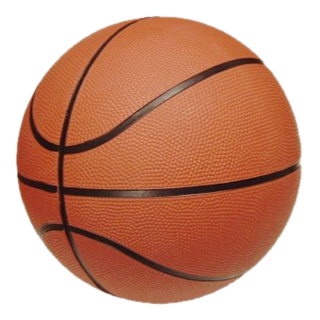 W
WA tip drill is a basketball exercise in which players take turns to tip the ball off the backboard consecutively without the ball touching the ground. After each rebound the player goes to the back of the queue leaving the next player to repeat the drill. The aim of the drill is to develop timing and jumping ability for rebounding.
 W
WAn uncontested shot is a term used in basketball. It encompasses shots from a layup, a slam dunk, and jump shots. It is any kind of shot in which the shooter has no one contesting or interfering with the shot. In competitive leagues, an uncontested shot is one in which a defender is not within five feet of the shooter or one in which a defender is not near enough to alter the offensive player's shot in any way. The primary strategy of most offensive plays is to gain an uncontested shot and defensively to prevent one.
 W
WIn team sports, the number, often referred to as the uniform number, squad number, jersey number, shirt number, sweater number, or similar is the number worn on a player's uniform, to identify and distinguish each player from others wearing the same or similar uniforms. The number is typically displayed on the rear of the jersey, often accompanied by the surname. Sometimes it is also displayed on the front and/or sleeves, or on the player's shorts or headgear. It is used to identify the player to officials, other players, official scorers, and spectators; in some sports, it is also indicative of the player's position.